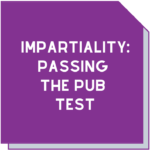The top 3 things to do to be ready for ISO 15189 assessments
written by Maree Stuart

Late last year, a new version of ISO 15189 was released. It wasn’t done under the cover of darkness – hopefully, those affected know it’s coming.
The countdown is now on for implementation, and there’s less than a month to go until D-Day, 1 August.
In this article, we’ll explore some of the key changes and what that means to Medical Labs. We’ll also cover how you can prepare for assessments done to the new standard.
The good news is that you don’t need to make too many changes to what your lab is already doing. But there are some changes to be aware of.
1. What are the changes?
Management system requirements
As you might expect, this quality management system standard has adopted many of the requirements that exist in the likes of ISO/IEC 17025 and ISO 9001. This alignment, especially with ISO/IEC 17025:2017 resulted in the management requirements now appearing at the end of the document.
There are options to make use of your organisation’s certification to ISO 9001. There will still be at least a partial assessment of the quality system elements by NATA and you’ll need to provide some additional documentation in relation to your certification.
If you don’t have an ISO 9001 certification from a JAS-ANZ accredited certification body, NATA will still be doing a comprehensive assessment of your lab’s quality management system.
Risk management
There’s now an increased emphasis on risk management. That means that there is less prescription in the requirements. So labs now have a bit more flexibility in how they approach addressing the requirements.
If your systems have been running along nicely and serve your lab’s needs well, then you don’t have to change them. But you do need to think about them with risk (and opportunity) goggles on.
POCT
 The world has moved on since the last standard release in 2012. These days, not all testing is done in a laboratory. In fact, there is an increasing amount of testing performed as point-of-care-testing. And developments like test kits for COVID-19 infections have hastened this along.
The world has moved on since the last standard release in 2012. These days, not all testing is done in a laboratory. In fact, there is an increasing amount of testing performed as point-of-care-testing. And developments like test kits for COVID-19 infections have hastened this along.
These requirements were previously in ISO 22870 and are now included as a normative appendix. It’s important to note that it does not include patient self-testing. However, it does cover all testing that’s done at a patient’s bedside by laboratory staff, doctors and nurses.
2. What are some of the other elements of the new standard?
We’ve looked at a few areas of the Standard and summarised these changes.
Definitions
There are important updates to some definitions. The Standard now includes a definition for many new concepts that have been included in the update. These include:
- Clinical Decision Limit
- Commutability of reference materials
- Consultant
- Examination procedure
- In-vitro diagnostic medical device
- Impartiality
- Laboratory user
Looking at these definitions gives us some insight into the other changes in ISO 15189.
Impartiality
This topic has been a feature of ISO/IEC 17025 and ISO 17020 for several years and it’s no surprise that it is now in ISO 15189. These new requirements are an evolution of the requirements for ethical conduct.
ISO 15189 asks medical labs to do several things:
- Undertake lab activities impartially
- Structure and manage the lab to safeguard impartiality
- Not allow commercial, financial, and other pressures to compromise impartiality
- Monitor, identify and eliminate or minimise threats to impartiality.
So here’s what you really need to do:
- Set up your lab to minimise the possibility of conflict when people have to make those ‘irky’ decisions. Don’t have the best friend of the patient decide on whether a result can be released for that patient. But I get it; sometimes that’s not possible, especially in small labs. So….
- Establish a review process. Transfer the decisions of approval or acceptance to another person in the organisation if at all possible. The chance of two people getting the decision wrong are smaller than if just one person makes these decisions. Lab QC and review of requests, contracts and reports are the perfect tools for this.
- Get a clear idea of the people in your lab. Understand the relationships that exist with others inside and outside of the lab. Consider governance relationships too. If you don’t know, ask, but don’t make it an interrogation. Perhaps a questionnaire can help. Remember to explain the reasons why you’re asking these questions. Find more tips in our previous article on How to ask good questions.
- Run the relationships through your risk management system to determine if there are any significant risks above your risk threshold. If there are, put things in place to either eliminate or mitigate these risks. Make sure you can demonstrate how you dealt with these risks to impartiality to an auditor.
- Lastly, think about the culture of your lab. Is it one where anything goes? Is it one where people feel able to disclose that feeling in the pit of their stomach when they feel uncomfortable? The latter, as opposed to the former, is what you should be aiming for. What can you do, as a lab manager or staff member, to encourage the right kind of culture? Can you demonstrate your organisation’s values in your everyday work? (Do you even know what these values are?) Can you use things like the quality policy, structure and content of any management and staff meetings to drive a culture where you can safeguard impartiality?
If you can’t answer these questions to your satisfaction, then perhaps there is more work to do in the culture arena.
Confidentiality
There have always been requirements for confidentiality. But there is a new twist on the requirements. They now cover not only confidentiality, but also privacy of patient information.
Medical labs now need to have “legally enforceable agreements” for maintaining confidentiality.
TIP: Make sure you review your employment contracts and any terms and conditions with suppliers, patients, and referrers to check if this is covered.
A Patient-Centric Approach

The well-being, safety and rights of patients now have higher status. This reflects how many other management systems for healthcare service organisations have moved to embrace a key foundation of quality: the focus on the needs of the customer.
We’ve written previously on what it takes to have a good customer focus. Many of the requirements for processes within the Medical Lab make a lot of good sense and are not really rocket science.
Having said that, labs will need to demonstrate how they have met this element of ISO 15189. That includes a review of the Quality Policy to ensure it considers this elevated focus on meeting the needs of customers and laboratory users.
Personnel
These requirements now include processes for authorisation of particular lab activities:
- Selection, development, modification, verification, and validation of methods
- Review, release, and reporting results
- Use of various functionalities in LIMS
It’s important that your lab’s records for staff reflect these specific authorisations. So now is a good time to review how you record the authorities for staff members and update the system as necessary.
Metrological Traceability
The previous standard required metrological traceability to a reference material or reference procedure of a higher metrological order. The update now reflects the current definition for metrological traceability and encompasses traceability through calibration by a competent lab. This also better reflects the Metrological Traceability policy of NATA.
Method Selection
There is a new nuance on what constitutes a valid method. Now, labs have to ensure the assure the clinical accuracy of the examination and its impact on patient care. That means labs must consider not only what’s cheap and “do-able”, but also the required clinical accuracy and how this decision impacts the patient.
3. How to prepare for assessments
Here’s our 4 simple steps for preparing for an assessment against ISO 15189:2022
-
Get a copy of the Standard and read it
It seems obvious, but you know, sometimes we need a reminder, just like reading the equipment instructions before use………
-
Get familiar with what NATA is expecting
That doesn’t mean you have to attend a NATA training course on the new standard. After all, sometimes that’s time out of the lab that you simply can’t afford.
NATA has a gap analysis and implementation policy and if you’ve not done something to prepare for the changes, now is the time to get cracking on this.
We’ll also be offering training in the new standard if you’re interested. In fact, you can register your interest here!
-
Decide what you need to change and what can stay the same
A good gap analysis is important in this step. You need to be objective and make sure you can rise to the challenge of really addressing the changes. Doing a half-hearted job can lead to problems in the future. Sometimes getting a fresh set of eyes over your system can help.
-
Ask for help
Working in a lab can sometimes be isolating and you don’t get the chance to talk to peers outside of your workplace. You don’t need to do it all by yourself.
If you have a professional network of laboratory people, then use the network to get some ideas.
And sometimes you just need to get some professional help to get the job done efficiently and effectively without the stress. That’s where we can help.
Contact us if you need help with getting a gap analysis done, training your staff in the new requirements, or getting your system up to standard.
You can also contact Maree on 0411 540 709 for an obligation-free confidential discussion.
Remember, you don’t have to do this alone!





